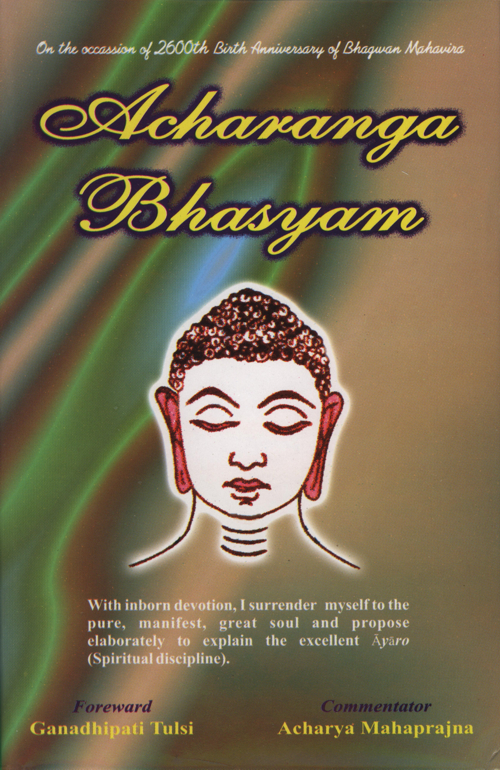The title of the present chapter is śastraparijñā [1] (comprehending and giving up the weapon of injury). The topic propounded in the sutra is 'self-restraint' as regards living beings. [2] This self-restraint is ahiṃsā. "The secret of ahiṃsā," says the Dasāvaikālika Sūtra (6.8), "is self-restraint in regard to all living beings, which was realised by Lord Mahāvῑra."[3] According to Acharya Bhadrabahu, the author of the Ācārāṅga Niryukti (the earliest commentary), four topics have been expounded in this chapter,[4] namely soul, exposition of six classes of living beings, bondage and abstinence. These topics relate to the Jaina science of conduct.
Self-restraint stands for not injuring earth-, water-, fire-, air-, and plant-bodied beings as well as two-, three-, four-, and five-sensed beings; also for restraint in using inanimate objects, control of the senses, avoiding laxity, proper disposal of excreta, inspecting and sweeping the place before use, and mental, vocal and physical restraint. Of these seventeen varieties, the first nine are concerned with the six classes of living beings:[5] the first five constituting five classes of immobile beings and the last four making the class of mobile beings. This self-restraint is possible only on the acceptance of the existence of soul (the sentient substance). Such acceptance leads to the four doctrines as the basis of self-restraint, doctrine of soul, doctrine of the cosmos, doctrine of karma and doctrine of action.[6] The existence of soul, moreover, cannot be established without accepting ne existence of its counterpart, namely, non-soul (the non-sentient substance). This is why the doctrine of the non-soul, like the doctrine of soul, is also the basis of self-restraint.[7] In the aforesaid list of seventeen pieties of self-restraint, the tenth is concerned with the non-sentient bodies. The doctrine of karma is bound up with the principle of bondage to which the doctrine of action is causally related.[8]
The scripture, Ācārāṅga, propounds brahmacarya [9] in its widest connotation as the science of soul and the discipline of conduct based on that science. In this spiritual scripture,[10] abstinence has been accepted as the essence of conduct. Abstinence means giving up all sorts of violent activities. This is the principal aim of the ascetic's conduct.
In the Upaniṣads there are discussions, about the existence of soul, but the doctrine of six classes of living beings is an absolutely original contribution of the Jainas. There is mention of mobile beings and also plant life in non-Jain literature, but the exposition of other types of living beings such as, immobiles like the earth-bodied, etc. and the scientific classification of beings based on the number of senses is exclusively a contribution of the Jainas. In the Sūtrakṛtāṅga [11] and other subsequent scriptures,[12] the doctrine of six classes of living beings has found universal acceptance.
The attribution of pleasure and pain to the immobile beings such as earth-bodied creatures is also an absolutely novel contribution. The comparison of the plant body with human organism in this context attracts the attention of the modern scholars. The doctrine of the weapons of injury to the living beings opens up a new vista of research in this field. Attention is spontaneously drawn to the detailed description of such weapons and the logical argumentation to prove the category of sentient beings. Thus the present chapter is uniquely important from a number of standpoints.
jῑvo chakkāyaparūvaṇā ya tesiṃ vahe ya baṃdhotti.
viraῑe ahigāro, satthapariṇṇāe ṇāyavvo..
sattarasavihe saṃjame paṇṇatte, taṃ jahā—puḍhavῑkāyasaṃjame āukāyasaṃjame teukāyasaṃjame vāukāyasaṃjame vaṇassaikāyasaṃjame beiṃdiyasaṃjame teiṃdiyasaṃjame cauriṃdiyasaṃjame paṃciṃdiyasaṃjame ajῑvakāyasaṃjame pehāsaṃjame upehāsaṃjame avahaṭṭu-saṃjame pamajjaṇāsaṃjame maṇasaṃjame vaisaṃjame kāyasaṃjame.
 Acharya Mahaprajna
Acharya Mahaprajna

